A chemical entering a person's trachea and lodging itself in between the respiratory system and digestive tract is an everyday occurrence. Shop floor workers must be aware of the risks involved in utilizing chemicals likely to give rise to this scenario, some of which may seem innocuous, like turpentine. It is an EHS Manager's responsibility to make sure these chemicals, as identified by scientific evidence on their potential aspiration hazard and on their kinematic viscosity values, are accurately labelled.
Reading through the entire GHS Purple Book for the exact guidelines can be a daunting task. That's why ERA experts have compiled the essential information into a concise, 20-page guide that is both thorough and easy to read. If you work with Safety Data Sheets (SDS) for health and safety purposes, this resource will save you time and ensure that you have the right chemical information displayed accurately.

By reading this guide, you will learn the following:
- The precise definition of an aspiration hazard, with example substances
- How to classify substances that pose an aspiration hazard based on GHS criteria and kinematic viscosity calculations
- The classification methodology for mixtures with and without data (on the complete mixture or its ingredients)
- Which label elements are necessary for indicating an aspiration hazard








